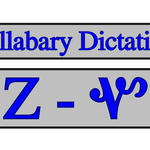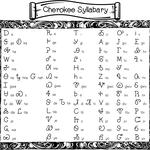
Evening Practice
Learning the shapes.
This exercise covers “Ꮓ (no)”, “Ꮔ (nu)”, “Ꮕ (nv)”, “Ꮖ (gwa)”, “Ꮗ (gwe)”, “Ꮘ (gwi)”, and “Ꮙ (gwo)”.
Estimated time: 5 minutes.

The Cherokee syllabary was invented by a single individual named Sequoyah (ᏍᏏᏉᏯ) to write the Cherokee language in 1819. He is credited as the only known person in history to create an alphabet from scratch without knowing how to read or write.
Around 1809, impressed by the “talking leaves” of European written languages, Sequoyah began work to create a writing system for the Cherokee language. After attempting to create a character for each word, Sequoyah realized this would be too difficult and eventually created characters to represent syllables… He worked on the syllabary for twelve years before completion… The rapid dissemination of the syllabary is notable, and by 1824, most Cherokees could read and write in the newly developed writing system.
In 1828, the ordering of the Syllabary and each letter’s shape were modified by Cherokee author and editor Elias Boudinot to adapt the Syllabary to the printing press… for the creation of the “Cherokee Phoenix (ᏣᎳᎩ ᏧᎴᎯᏌᏅᎯ)”, the first newspaper published in a Native American language… A digitized, searchable version of the paper is available through the University of Georgia Libraries and the Digital Library of Georgia.